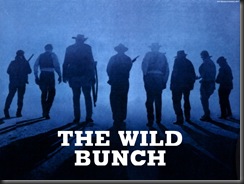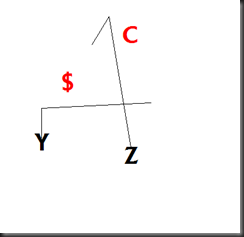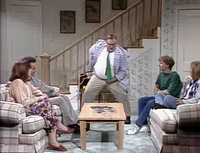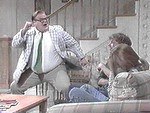I’m not coaching (again) this year. Part by choice – part by schedule (conflict). When you are away from the frying pan, you are afforded the luxury of a perspective without any critical timeline. When you’re not confronted with an instant-response requirement to develop a plan for the next game or (during the spring) the next season’s practice structure anything can seem like a good idea. During the spring, your team is full of potential and beaming with unchallenged optimism. You will try new things, looking for any edge you can find to become even better than you were last season to improve your players performance to a higher, more efficient level.
Along that mindset, something that has been on my mind for a few months after stumbling upon an enlightening book, “The Tell-Tale Brain", by Dr. V. S. Ramachandran, and his theory of the “mirror box”. Its an amazing discovery, though simple in concept.
The patient put his phantom limb on the nonreflecting side of the mirror and his normal arm on the reflecting side of the mirror. When the patient then looked at the reflecting side, it appeared as if the phantom limb had returned. (It was, in fact, a reflection of the patient's existing arm.)
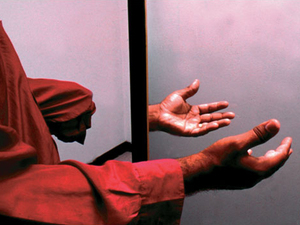
"If the patient then starts moving his hand, clapping his hand or conducting an orchestra or waving goodbye while looking in the mirror, he's going to see the mirror reflection of the normal hand superposed on the phantom, moving in command with the command sent to the phantom arm," says Ramachandran. "So you're going to get the visual illusion that the phantom limb is obeying the command."
Though patients know intellectually that their phantom limbs have not returned, they are able to successfully trick their brains into thinking that their limbs have returned.
"It not only looks like it's there, it feels like it's there," says Ramachandran. "Patients say, 'When I move my normal hand, the phantom arm looks like it's moving. When I open the normal fist, the phantom hand — whose fist I could not open for months — suddenly feels as if it is opening as a result of the visual feedback, and the painful cramp goes away.' This is a striking example of modulation of pain signals by vision."
Dr. V.S. Ramachandran, called the "Marco Polo of neuroscience" by Richard Dawkins, is the author of several books on the brain, including Phantoms in the Brain: Probing Mysteries of the Human Mind and A Brief Tour of Human Consciousness: From Impostor Poodles to Purple Numbers. He gave the 2003 BBC Reith Lectures and has published more than 180 papers in scientific journals including Nature and Science.
So, I’ve just been simmering on that concept for the past five months or so, thinking, “Hey, could this be helpful with coaching?”. It was also during this time that I was fully immersing myself in Coach Mark Rodriguez’s 4D-FTP transition / footwork methods.
Yeah, sounds good and if it works, you’d look like a genius. So the question is, it may work for the neurologist quack and his fancy book-learnin’, but is there any practical use in the “real world”?
Well, when you stop and think about it – yes, there is, and its quite common. Skilled dancers relyon instant reinforcement of mirrors in dance studios all the time. Without it, performers may feel like they’re doing a great job, but quite possibly contorting themselves into horribly inefficient movements.


Also, think of the (real) purpose of all those mirrors in the gym. No, they aren’t for you to practice your pose down for the Arnold Classic, but to reinforce strict form on your concentric/eccentric movements. So, yeah…..I guess it IS a common practice when training the body to perform an action.

I’ve always appreciated (and stressed the need for) filming practice and drill work to reinforce/review technique with players. While it has been helpful, I find the lack of immediate response rather deflating. Sure, you get to see what went wrong, what is correctable, but it usually requires another practice session hours away (or 24 hours after viewing) for an opportunity to get it right (then go through the same process, if audible cues aren’t successful). The point is – if you can get an immediate stimulus to how you (as an athlete) are performing, you could ‘self-correct’ instantly. The athlete could take cues not just from what a coach is telling him, but he would see and feel the peak body position.
How could it be used? The key to technique is in the minutiae of movement; leverage, body position, feet and hips. I’m thinking foot placement ladder drills for DBs (or the 4D weave drills) or OLine stance/starts. Anything where you’re just concentrating on few movements in a short space. The player obviously would have to be in an environment where you are not pressed for time (so I’m thinking pre-practice), won’t be making contact, and where the eye-level/focus can be sacrificed to reinforce body position (in the mirror).

If I were coaching this spring, I was planning on just using a simple full-length mirror (that you could get cheaply at any department store), place it horizontally along a DB ladder. With the player’s eye level through the mirror, they can see each step as they take it, and ensure they aren’t over striding, and are effectively placing their toes on the ground. You obviously wouldn’t use it in every drill, just when you’re trying to build those fundamental psycho-motor responses that are intuitive in great game performers.
What are the drawbacks?
- It is different.
- It requires the athlete’s eye’s be diverted to a focal point you may not want to reinforce (if eyes are down for below-the-waist training).
- May not see an immediate (if any) benefit (you’re training muscle-memory…it is long-term process).
- Out on the field, equipment (mirror) is fragile and could cause a real mess. This is something probably reserved for indoors / at the Field House.
I don’t know – maybe I’m just completely full of it. Let us know what you think. It could help or it could be just a huge waste of time.
